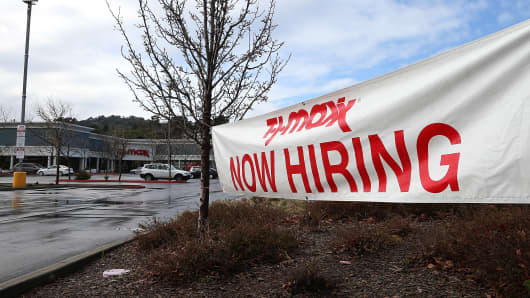In other words, most retailers have already added to their holiday employee rosters. This is primarily a result of early holiday marketing and advertising as retailers look to extend the peak shopping season for as long as they can.
But the fact that retailers have willfully gotten a jump on the holidays provides little comfort to the millions — actually, scratch that, tens of millions — of unemployed who are at their wit's end because jobs are an insanely rare commodity. And, with businesses facing a tidal wave of challenges, it's hard to imagine payrolls expanding and helping so many who desperately need to work.
(Read more: White House sees 'deterioration' in October job market)
Despite countless amounts of government-induced stimulus, including the current monetary policy program known as quantitative easing from the Federal Reserve, the United States' economy has added only 4.5 million jobs over the course of the recovery from 2009 to 2013. And, 40 percent of these jobs are considered "low wage" employment, where the median pay is $13.83 an hour.
So, what to do?
Well, it's obvious the topic of job creation was top-of-mind at the recent meeting of Fed officials when they released a statement declaring a continuation of the current QE program until the job picture improves. Now, the word "improves" is completely arbitrary, because — let's be honest — it's easy to improve when the data is so low. But, still, the Fed is clearly concerned about the severity of the situation.
After the Fed, though, there really isn't a lot of movement in job creation. Congress is busy trying to just stay in business, so any detailed legislation or ideas really have been tabled because evidently lawmakers can't be worried about items of economic calamity right now. And, even the White House has its hands full fixing websites and 800 numbers. I'm not even sure Santa Claus can help the unemployed.
The key takeaway from all of this, though, is the unemployed are giving up hope. There are over 90 million Americans who are not even participating in the labor force. They are not even looking for a job.
A few years ago, you would read stories of thousands of eager job seekers lining up for only a few hundred jobs. Now, those stories are few and far between. It's sad because once you give up hope, diminished skills and sentiment follow closely behind. If there were ever a time for a Christmas miracle, the unemployed will tell you this is it.
Todd M. Schoenberger is the founder and managing partner of LandColt Capital LP, and serves as Portfolio Manager of the LandColt Onshore and Offshore Funds. Follow him on Twitter @TMSchoenberger.


